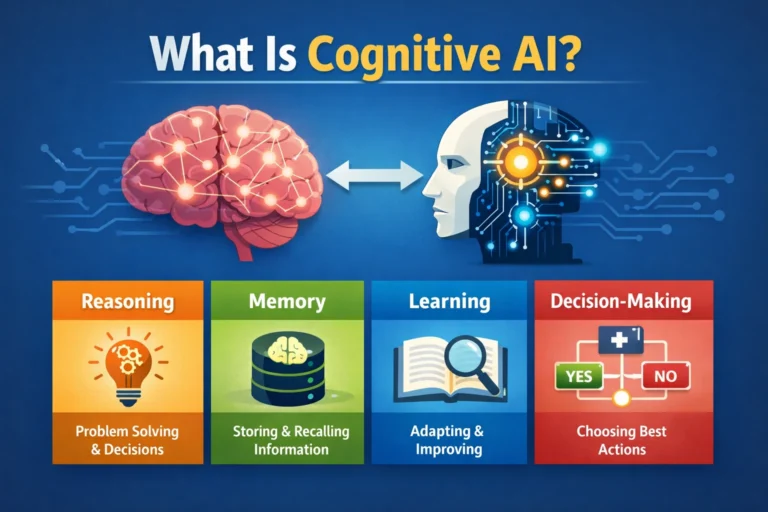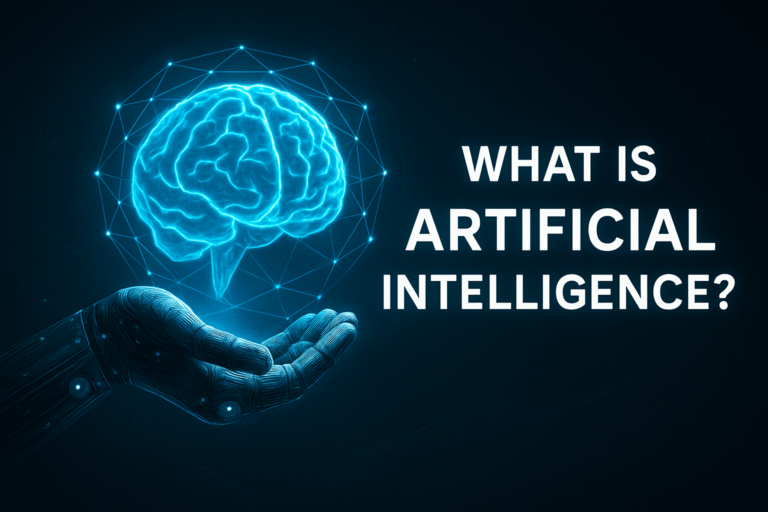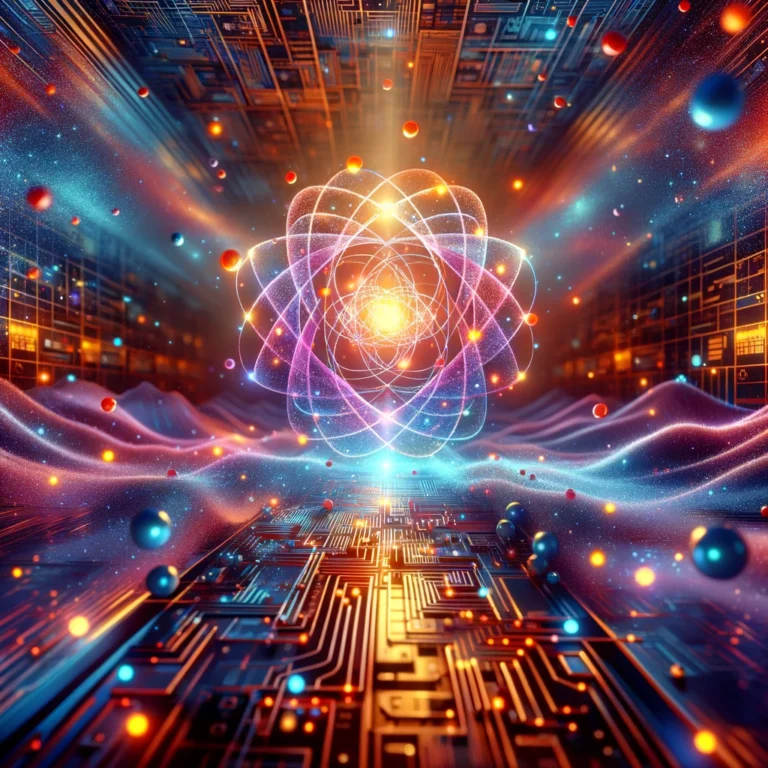Exploring the Revolution of Computer Vision in AI

In the field of Artificial Intelligence computer vision emerges as a critical discipline, enabling machines to interpret and understand the visual world. This technology mimics human vision by processing, analyzing, and making sense of visual data. At its core, computer vision strives to replicate the complexity of human sight, translating pixels into meaningful information. Its significance in AI cannot be overstated, as it serves as the eyes for machines, allowing them to recognize patterns, objects, and scenes in images and videos.
1. What is a Computer Vision
The evolution of computer vision highlights the remarkable advancements in AI. Initially, computer vision focused on understanding simple shapes and patterns in static images.
Today, it has evolved into a sophisticated field capable of identifying faces, diagnosing diseases from medical imaging, and enabling autonomous vehicles to navigate complex environments.
This journey from basic image processing to complex visual understanding mirrors broader trends in AI, showcasing both technological progress and the growing integration of AI into everyday life.
Computer vision’s significance lies in its ability to automate tasks that require visual cognition, thus broadening the capabilities of machines and opening up new possibilities across various sectors.
By equipping computers with the ability to see, analyze, and interpret the visual world, computer vision is not just an academic curiosity but a transformative technology impacting everything from security and healthcare to entertainment and autonomous driving.
As we examine computer vision’s history, technologies, applications, challenges, and future directions, we see that this field is at the forefront of AI research and application.
It embodies AI’s aspirations to augment human abilities and create systems that can operate independently in complex, real-world environments.
The evolution of computer vision, from its early days to its current state and beyond, offers a compelling narrative of innovation with profound implications for the future of technology and society.
2. Historical Development of Computer Vision

Computer vision’s journey from its early stages to a pivotal force in artificial intelligence is a story of relentless pursuit, technological breakthroughs, and visionary research.
This evolution reflects the advancement of algorithms and computing power and a deeper understanding of human vision and machine learning.
The Genesis and Early Research
The origins of computer vision as a field can be traced back to the 1960s when the quest to enable machines to “see” began.
Initial experiments aimed to allow computers to recognize basic shapes and patterns.
The Summer Vision Project at MIT in 1966, led by Marvin Minsky and Seymour Papert, is often cited as one of the first attempts in this direction, setting the stage for future exploration despite its limited success.
Breakthroughs and Evolution
The following decades saw incremental advancements and significant challenges.
Interpreting visual data proved to be more daunting than initially anticipated, leading to periods of skepticism and breakthrough.
The 1970s and 1980s saw the development of foundational algorithms for edge detection and optical character recognition, laying the groundwork for more complex image analysis.
In the 1990s, the focus shifted towards integrating computer vision with neural networks, inspired by the understanding of human visual processing.
This period saw the emergence of face recognition technology and the first practical applications of computer vision in industrial automation and surveillance.
Deep Learning for Computer Vision
The introduction of deep learning in the 2010s marked a turning point for computer vision.
The development of Convolutional Neural Networks (CNNs) by researchers such as Yann LeCun, Geoffrey Hinton, and Yoshua Bengio revolutionized the field, enabling unprecedented accuracy in tasks like image classification, object detection, and semantic segmentation.
This era also saw the proliferation of large-scale image datasets, such as ImageNet, which played a crucial role in training and benchmarking AI models.
Key Milestones and Figures
Throughout its history, computer vision has been shaped by numerous influential researchers and landmark projects.
From Marvin Minsky’s pioneering work to the modern contributions of Alex Krizhevsky, Ilya Sutskever, and Geoffrey Hinton with the AlexNet architecture in 2012, these milestones reflect the collaborative and cumulative nature of progress in the field.
The historical development of computer vision is a testament to the resilience and ingenuity of the AI research community.
From early experiments with basic pattern recognition to the deep learning models that now enable machines to interpret complex scenes with remarkable accuracy, the evolution of computer vision mirrors the broader trajectory of AI.
As we stand on the shoulders of giants, the past achievements in computer vision inspire future generations of researchers and practitioners to continue pushing the boundaries of what machines can perceive and understand.
3. Core Technologies Behind Computer Vision
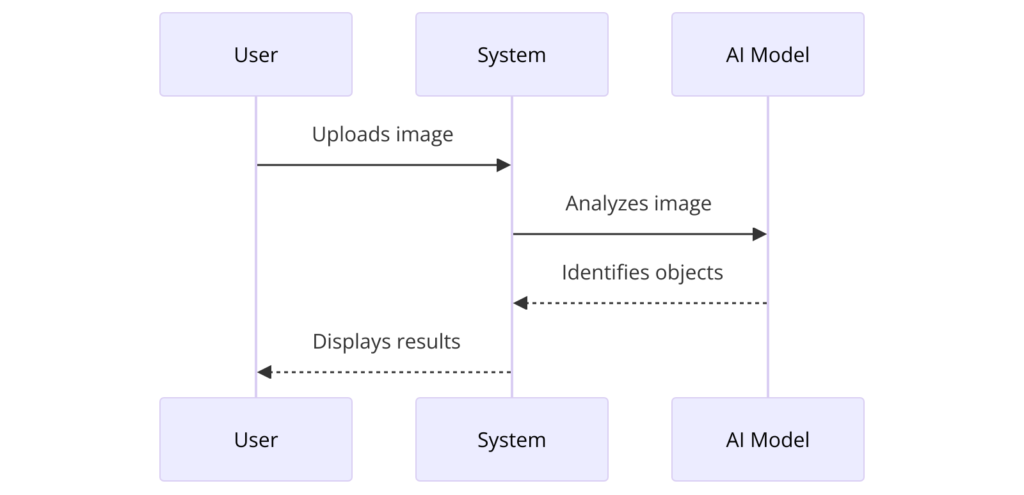
Advancements in computer vision are underpinned by a suite of core technologies that have evolved over time.
These technologies enable machines to “see” and understand and interpret the visual world with increasing sophistication.
Central to these advancements are image recognition and object detection, as well as the significant role played by deep learning and neural networks.
Image Recognition and Object Detection
At the heart of computer vision lies the capability to recognize images and detect objects within them.
Image recognition involves classifying an image into one or more categories, while object detection identifies specific objects within the image, often providing a bounding box around each object.
These tasks rely on feature extraction, which involves identifying unique attributes or patterns in the visual data that can distinguish one object from another.
Early approaches to image recognition and object detection utilized hand-crafted features and traditional machine learning algorithms.
Techniques such as edge detection, color analysis, and texture measurement were employed to extract meaningful patterns from images.
However, these methods often needed help with complex scenes and variability in object appearances.
Computer Vision and Deep Learning
The introduction of neural networks, particularly Convolutional Neural Networks (CNNs), marked a paradigm shift in computer vision.
Inspired by the biological processes of the human visual cortex, CNNs automatically learn hierarchical feature representations from raw image data.
This ability to learn features directly from the data without requiring manual feature engineering significantly improved the accuracy and robustness of image recognition and object detection systems.
Deep learning models, trained on large datasets with backpropagation, have set new standards for performance in computer vision tasks.
Architectures like AlexNet, VGG, ResNet, and YOLO (You Only Look Once) for real-time object detection have demonstrated remarkable successes in various benchmarks and competitions, such as the ImageNet Large Scale Visual Recognition Challenge (ILSVRC).
Computer Vision Machine Learning
The evolution of computer vision has also been propelled by continuous improvements in algorithms and computational techniques.
Innovations such as transfer learning, where a model trained on one task is adapted for another, and data augmentation, which artificially expands training datasets, have further enhanced the capabilities of AI systems in understanding visual content.
The development of generative adversarial networks (GANs) has opened up new possibilities in image generation and modification, allowing for the creation of realistic synthetic images and manipulating visual attributes in existing images.
Meanwhile, reinforcement learning has begun to find applications in robotic vision, where machines learn to navigate and interact with their environment through trial and error.
As computer vision technologies continue to advance, integrating these core components—enhanced by the power of deep learning and innovative algorithms—promises to extend the boundaries of what machines can perceive.
From recognizing faces with pinpoint accuracy to understanding complex scenes in real-time, the core technologies behind computer vision are driving a new era of AI capabilities with profound implications for industries and society.
4. Applications for Computer Vision
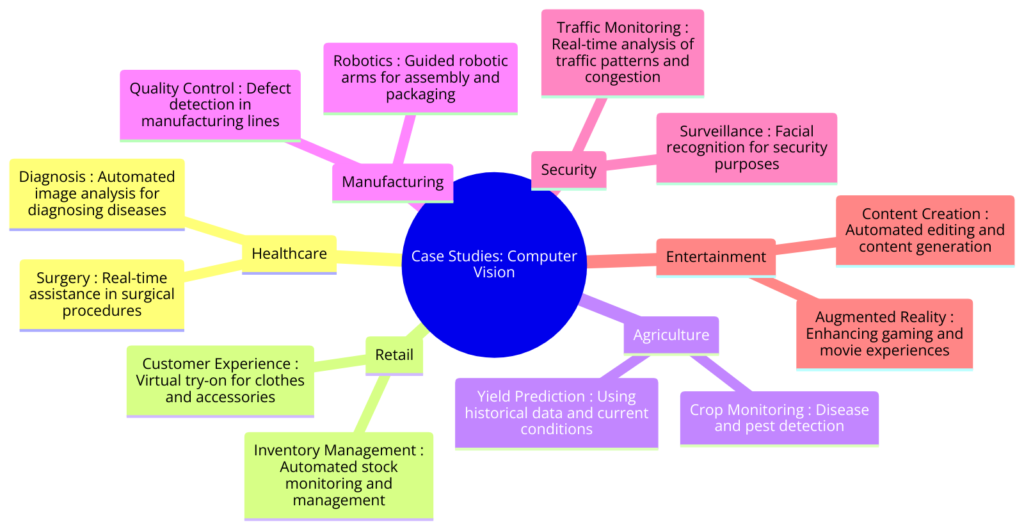
Computer vision has transcended its academic origins to become a transformative force across numerous industries.
It has revolutionized how machines interact with the visual world.
This technology’s wide-ranging applications demonstrate its versatility and potential to address complex challenges, improve efficiencies, and enhance human life.
Healthcare
In the medical field, computer vision is revolutionizing diagnostics and patient care.
AI-driven imaging analysis tools can detect anomalies in X-rays, MRIs, and CT scans with high accuracy, often identifying diseases such as cancer at early stages.
Furthermore, computer vision assists in surgical procedures by providing real-time imagery, enhancing precision, and reducing human error.
Automotive Industry
Autonomous vehicles rely heavily on computer vision for navigation and obstacle detection.
Through cameras and sensors, these vehicles interpret traffic signs, detect pedestrians, and navigate roads, promising a future of safer and more efficient transportation.
Additionally, computer vision facilitates driver assistance systems, such as lane departure warnings and automatic braking.
Retail
Computer vision technologies enhance customer experiences and operational efficiency in retail.
Innovative checkout systems use cameras to automatically identify products, speeding up the process.
Similarly, inventory management systems employ image recognition to track stock levels, reducing shortages and overstock.
Manufacturing
Computer vision streamlines quality control in manufacturing, automatically inspecting products for defects.
This application improves product quality and reduces waste and operational costs.
Furthermore, AI-driven visual systems guide robotic arms in assembly lines, enhancing precision and productivity.
Agriculture
Computer vision technology benefits the agricultural sector through precision farming techniques.
Drones with cameras analyze crop health, identify pest infestations, and assess water needs, enabling targeted interventions that conserve resources and increase yields.
Security and Surveillance
Computer vision enhances security by monitoring real-time video feeds for unusual activities or unauthorized access.
This capability is crucial for public safety, crowd management, and protecting assets in various settings, from urban centers to critical infrastructure.
Entertainment and Media
In the entertainment industry, computer vision creates realistic visual effects and interactive gaming experiences.
AI algorithms generate dynamic content, adjust camera angles based on viewer preferences, and create immersive virtual reality environments.
Environmental Monitoring
Computer vision plays a pivotal role in environmental conservation, analyzing satellite and aerial imagery to track deforestation, monitor wildlife populations, and assess the health of ecosystems.
This application provides valuable data for policy-making and conservation efforts.
Challenges in Deployment
Despite these diverse applications, deploying computer vision solutions presents challenges, including ensuring privacy, managing data biases, and achieving high accuracy in varied and dynamic environments.
Addressing these challenges requires continuous research, ethical considerations, and regulatory oversight.
Conclusion
Computer vision’s applications are vast and growing, driven by advancements in AI and the increasing availability of data.
As technology continues to evolve, the potential for computer vision to innovate and enhance various sectors of society is boundless.
By harnessing this technology responsibly, we can unlock solutions to some of the world’s most pressing problems, from healthcare to environmental protection, paving the way for a future where AI-driven vision enhances human capabilities and improves lives.
5. Current Challenges in Computer Vision

Despite significant advancements and broad applications, the field of computer vision faces several technical, ethical, and practical challenges.
These challenges test the limits of current technologies and raise essential questions about the future development and deployment of computer vision systems.
Technical Challenges
• Accuracy and Reliability: Achieving high accuracy in diverse and dynamic environments remains challenging. Computer vision systems can struggle with variations in lighting, occlusions, and complex backgrounds, leading to object detection and recognition errors.
• Generalization: The ability of computer vision models to generalize from their training data to new, unseen images is a critical challenge. Models often perform well on benchmark datasets but may fail in real-world scenarios that differ from their training examples.
• Computational Resources: Advanced vision computer algorithms and deep learning models require significant computational power and memory. This demand limits the deployment of state-of-the-art models on devices with limited processing capabilities, such as smartphones and embedded systems.
Ethical Challenges
• Privacy: Examples of computer vision in surveillance and data analysis raise significant privacy concerns. The ability to track individuals, recognize faces, and analyze personal behaviors poses risks to individual privacy and autonomy.
• Bias and Fairness: Bias in training data can lead to unfair or discriminatory outcomes in computer vision applications. Ensuring that AI systems are fair and unbiased, especially in sensitive areas like facial recognition and hiring, is a pressing ethical challenge.
• Transparency and Accountability: As computer vision systems become more integrated into critical decision-making processes, ensuring transparency in how these systems work and accountability for their decisions is essential.
Practical Challenges
• Data Collection and Annotation: Developing accurate computer vision models requires large datasets with high-quality annotations. Collecting and labeling these datasets is time-consuming and expensive, posing a barrier to the development and improvement of computer vision applications.
• Integration with Existing Systems: Integrating computer vision technologies into existing infrastructures and workflows can be challenging. Compatibility issues, resistance to change, and the need for user training are common hurdles in adopting computer vision solutions.
Future Directions
Addressing these challenges requires concerted efforts from researchers, developers, policymakers, and stakeholders across various sectors.
Ongoing research aims to improve computer vision systems’ accuracy, efficiency, and fairness. Innovations in model architecture, data augmentation techniques, and transfer learning make computer vision models more robust and adaptable.
Moreover, developing ethical guidelines and regulatory frameworks will be crucial in ensuring the responsible use of computer vision technologies.
The current challenges in computer vision highlight the complexity of creating machines that can see and understand the world as humans do.
As the field continues to evolve, addressing these challenges will advance the technology and ensure its beneficial and ethical application in society.
While promising, the future of computer vision hinges on our ability to navigate these technical, moral, and practical challenges, fostering a future where AI enhances human capabilities and improves lives responsibly and equitably.
6. The Future of Computer Vision
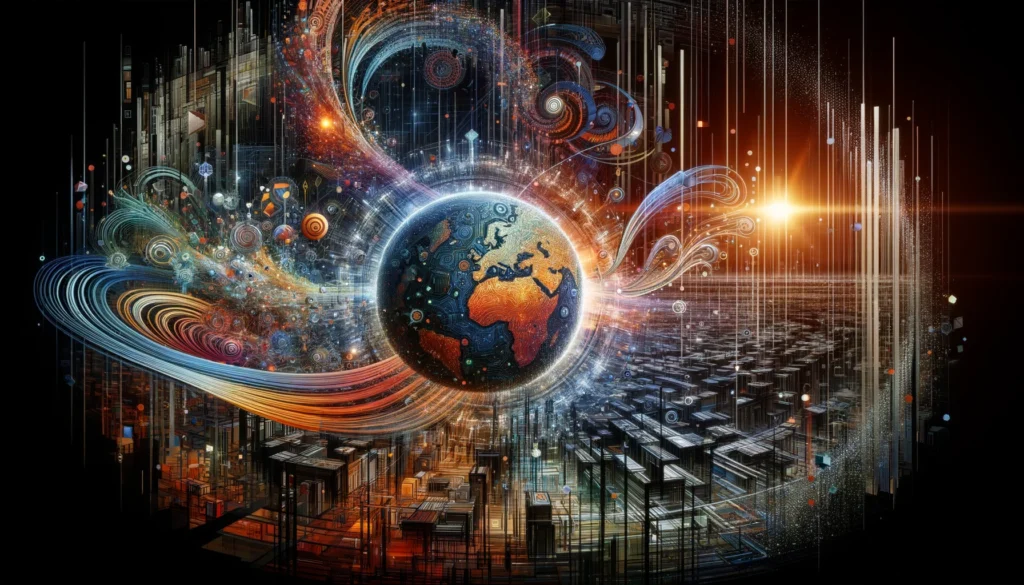
The trajectory of computer vision is set towards unprecedented advancements, with emerging trends hinting at a future where AI’s visual understanding rivals, and in some aspects surpasses, human perception.
As we navigate through the current challenges, the horizon is bright with potential innovations that promise to redefine the boundaries of what computer vision can achieve.
Predictions for New Technologies and Applications
• Augmented and Mixed Reality (AR/MR): Computer vision is a crucial enabler of AR and MR technologies, blending digital content with the real world. Future advancements could lead to seamless integration of virtual and physical worlds, enhancing educational, entertainment, and professional applications.
• Autonomous Systems Beyond Vehicles: While much of today’s focus is on autonomous vehicles, the future will see a broader range of autonomous systems. Drones, robots, and autonomous machinery in agriculture, construction, and environmental monitoring will benefit from improved computer vision capabilities, operating more independently and efficiently in complex environments.
• Advanced Healthcare Diagnostics: Computer vision will continue revolutionizing healthcare diagnostics by achieving higher precision in imaging analysis. AI-driven systems could predict health issues before they manifest, using subtle cues in medical imagery that are invisible to human doctors.
• Interactive Retail Experiences: The retail industry will increasingly leverage computer vision to create interactive and personalized shopping experiences.
Virtual fitting rooms, AI-driven inventory management, and in-store navigation assistance are just the beginning of how computer vision will transform retail.
Computer Vision Projects:

• Explainable AI (XAI) in Computer Vision: The push for explainability will grow as computer vision systems become more integral to critical decision-making. XAI aims to make AI’s decisions more transparent and understandable, fostering trust and facilitating wider adoption.
• Edge Computing: With the advancement of edge computing, computer vision applications will become more efficient and privacy-compliant. They will process data on local devices instead of relying on cloud-based servers. This shift will enable real-time applications and address privacy concerns by keeping sensitive data on the device.
• Synthetic Data Generation: To overcome the challenges of data collection and annotation, synthetic data generation using techniques like Generative Adversarial Networks (GANs) will play a crucial role. This approach can produce diverse, high-quality datasets for training computer vision models, accelerating development and reducing bias.
Potential Impacts on Society
Future advancements in computer vision are poised to profoundly impact society.
By enhancing machines’ ability to understand and interpret visual data, we can expect significant safety, efficiency, and convenience improvements across all aspects of life.
However, these technological leaps also necessitate careful consideration of ethical implications, privacy concerns, and the societal impact of widespread automation.
As we look toward the future of computer vision, it is evident that the intersection of technological innovation and ethical consideration will define its trajectory.
The potential for computer vision to enrich and transform lives is immense, but realizing this potential will require a balanced approach that values both human well-being and technological advancement.
The journey ahead for computer vision is not just about making machines see but doing so in a way that aligns with the broader goals of society.
7. Conclusion

The exploration of computer vision within the vast domain of artificial intelligence reveals a dynamic and rapidly evolving field integral to technological advancement and societal progress.
From its humble beginnings to the current era dominated by deep learning and neural networks, computer vision has continually pushed the boundaries of how machines interpret the visual world.
This journey has unlocked new possibilities across various industries and posed unique challenges and ethical considerations that demand attention.
Computer vision applications are as diverse as they are impactful, spanning healthcare, automotive, retail, agriculture, and beyond.
Each application underscores the technology’s potential to enhance efficiency, safety, and decision-making.
By automating tasks that require visual understanding, computer vision systems have begun to complement human capabilities, offering tools that can see beyond human limitations and process visual data at an unprecedented scale.
However, the journey of computer vision is far from complete.
Technical challenges related to accuracy, generalization, and computational demands continue to inspire research and innovation.
Ethical considerations, particularly concerning privacy, bias, and transparency, remain at the forefront of discussions about the responsible development and deployment of computer vision technologies.
Addressing these challenges is crucial for ensuring that the benefits of computer vision are realized equitably and sustainably.
Looking ahead, the future of computer vision holds promise for even more groundbreaking advancements.
Emerging trends in augmented and mixed reality, autonomous systems, healthcare diagnostics, and interactive retail experiences point to a world where computer vision technologies are woven into daily life.
The development of explainable AI, edge computing, and synthetic data generation offers solutions to current limitations, paving the way for more robust, efficient, and ethical computer vision applications.
Computer vision is a testament to artificial intelligence’s power to transform our interaction with the world.
As the field continues to evolve, collaboration between technologists, ethicists, policymakers, and society will be vital in navigating the challenges and maximizing the opportunities.
By fostering a future where computer vision enhances human life in responsible and innovative ways, we can look forward to a world enriched by this technology’s insights and capabilities.
The story of computer vision is still being written, and its following chapters promise to be as exciting as they are impactful.
FAQ & Answers
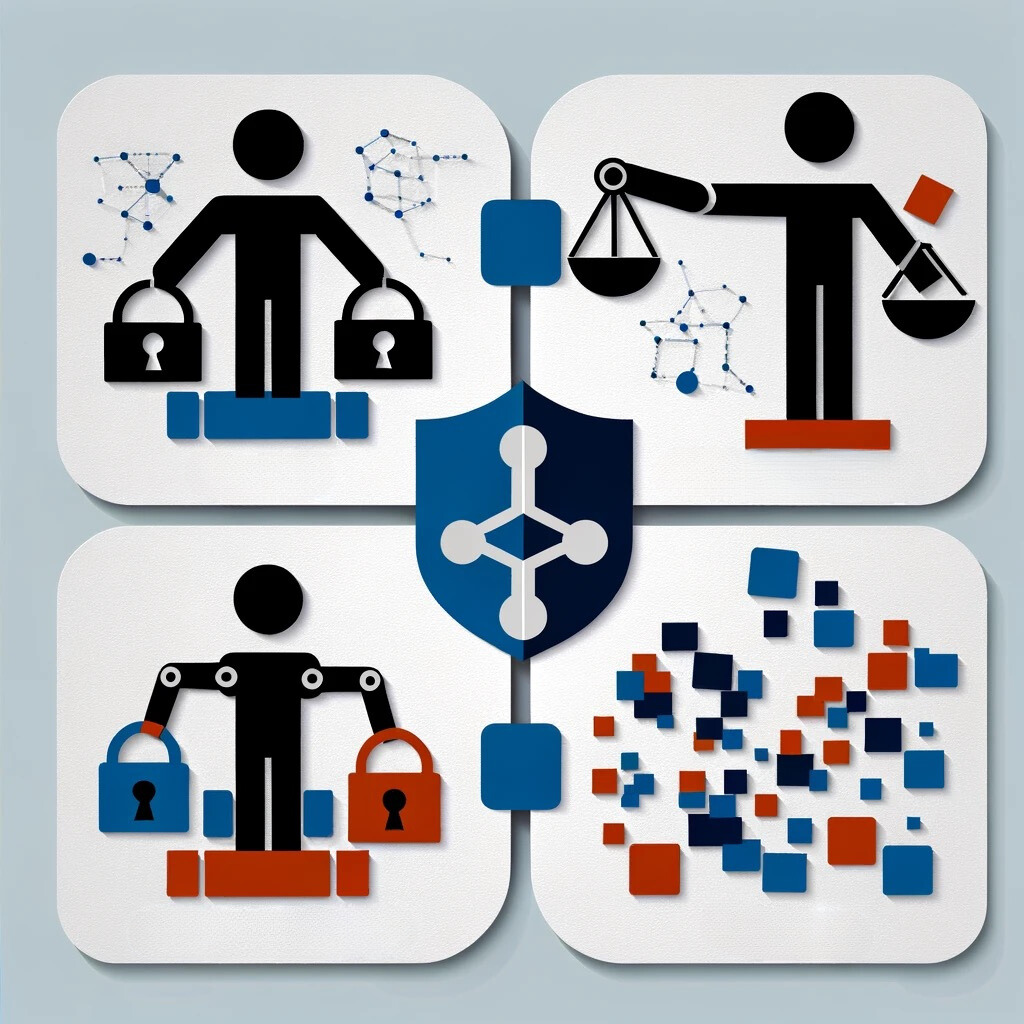
1. What is Computer Vision in AI?
It’s a field of AI that trains computers to interpret and process visual data as humans do.
2. How has Computer Vision evolved over time?
Starting from basic image recognition to complex 3D object detection.
3. What are some common applications of Computer Vision?
Includes facial recognition, medical imaging, and autonomous driving.


